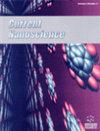Recycling the Spent Lithium-ion Battery into Nanocubes Cobalt Oxide Supercapacitor Electrode
IF 1.5
4区 材料科学
Q4 BIOTECHNOLOGY & APPLIED MICROBIOLOGY
引用次数: 0
Abstract
Background:: Cobalt oxide nanocubes have garnered significant attention as potential supercapacitor electrodes due to their unique structural and electrochemical properties. The spent lithium-ion batteries (LiBs) are considered as zero-cost source for cobalt oxide production. Objective:: The aim of this work is to recover cobalt oxide from spent LiBs and study its electrochemical performance as a supercapacitor electrode material. Method:: This study uses an electrodeposition method to obtain cobalt oxide honeycomb-like anodes coated on Ni foam substrates from spent Li-ion batteries for supercapacitors applications. The effect of annealing temperature on the cobalt oxide anode has been carefully investigated; 450 ºC annealing temperature results in nanocubes on the surface of the cobalt oxide electrode. X-ray diffraction confirmed the formation of the Co3O4-NiO electrode. Results:: The Co3O4-NiO nanocubes electrode has shown a high specific capacitance of 1400 F g-1 at 1 A g-1 and high capacitance retention of ~96 % after 2250 cycles at a constant current density of 10 A g-1 compared to 900 F g-1 at 1 A g-1 as for prepared Co3O4 honeycomb. Conclusion:: This strategy proves that the paramount importance of Co3O4-NiO nanocubes, meticulously synthesized at elevated temperatures, as a supremely effective active material upon deposition onto transition metal foam current collectors, establishing their indispensability for supercapacitor applications.废锂离子电池回收制备纳米钴氧化物超级电容器电极的研究
背景:氧化钴纳米立方由于其独特的结构和电化学性能,作为潜在的超级电容器电极而受到广泛关注。废锂离子电池(LiBs)被认为是生产钴氧化物的零成本来源。目的:从废锂中回收氧化钴,研究其作为超级电容器电极材料的电化学性能。方法:本研究采用电沉积法在超级电容器用废旧锂离子电池的Ni泡沫衬底上涂覆蜂窝状氧化钴阳极。研究了退火温度对氧化钴阳极的影响;450℃的退火温度会在氧化钴电极表面产生纳米立方体。x射线衍射证实了Co3O4-NiO电极的形成。结果:Co3O4- nio纳米立方电极在1 a g-1电流下的比电容为1400 F -1,在10 a g-1恒电流密度下循环2250次后的电容保持率为96%,而制备的Co3O4蜂窝电极在1 a g-1电流密度下的比电容为900 F -1。结论:该策略证明了在高温下精心合成的Co3O4-NiO纳米立方体作为沉积在过渡金属泡沫集流器上的一种极其有效的活性材料的重要性,确立了它们在超级电容器应用中不可或缺的地位。
本文章由计算机程序翻译,如有差异,请以英文原文为准。
求助全文
约1分钟内获得全文
求助全文
来源期刊

Current Nanoscience
工程技术-材料科学:综合
CiteScore
3.50
自引率
6.70%
发文量
83
审稿时长
4.4 months
期刊介绍:
Current Nanoscience publishes (a) Authoritative/Mini Reviews, and (b) Original Research and Highlights written by experts covering the most recent advances in nanoscience and nanotechnology. All aspects of the field are represented including nano-structures, nano-bubbles, nano-droplets and nanofluids. Applications of nanoscience in physics, material science, chemistry, synthesis, environmental science, electronics, biomedical nanotechnology, biomedical engineering, biotechnology, medicine and pharmaceuticals are also covered. The journal is essential to all researches involved in nanoscience and its applied and fundamental areas of science, chemistry, physics, material science, engineering and medicine.
Current Nanoscience also welcomes submissions on the following topics of Nanoscience and Nanotechnology:
Nanoelectronics and photonics
Advanced Nanomaterials
Nanofabrication and measurement
Nanobiotechnology and nanomedicine
Nanotechnology for energy
Sensors and actuator
Computational nanoscience and technology.
 求助内容:
求助内容: 应助结果提醒方式:
应助结果提醒方式:


